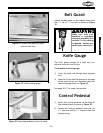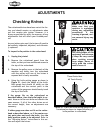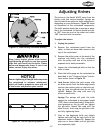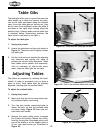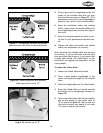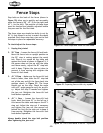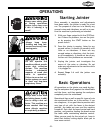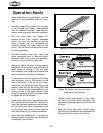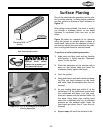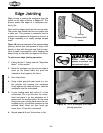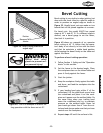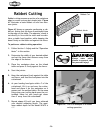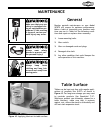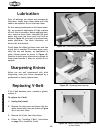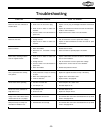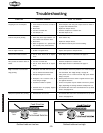
OPERATIONS
-23-
Surface Planing
One of the most common operations on the join-
ter is surface planing. Surface planing produces
one flat surface on a piece of stock as shown in
Figure 35.
After being surface planed, the stock is usually
run through a thickness planer so the board
thickness is consistent from one end to the
other.
Figure 36 shows an example of an operator
using the jointer to surface plane a piece of
wood stock. Notice that the operator’s body is
not directly behind the stock and that the oper-
ator is using push blocks to feed the board.
To perform a surface planing operation:
1. Make sure you have read and are familiar
with Section 1: Safety and the “Operation
Musts” in this section.
2. Place the workpiece so the concave side is
down on the infeed table and press the
workpiece firmly against the fence.
3. Start the jointer.
4. Using push blocks with both hands and keep-
ing firm (not hard) pressure on the fence
and table, feed the workpiece into the cut-
terhead.
5. As your leading hand gets within 4" of the
cutterhead, lift the push block up and over
the cutterhead and place it on the work-
piece as it passes over the outfeed table. Do
the same thing when your trailing hand
nears the cutterhead and try to maintain
pressure on the outfeed table. Never let
your hands get closer than 4" from the cut-
terhead!
6. Repeat steps 4-5 until the surface is flat.
Figure 35. Surface planing produces a flat sur-
face from concave stock.
Portion
Removed With
Jointer
Always wear safety
glasses to prevent seri-
ous personal injury!
Figure 36. This is an example of a surface
planing operation.



